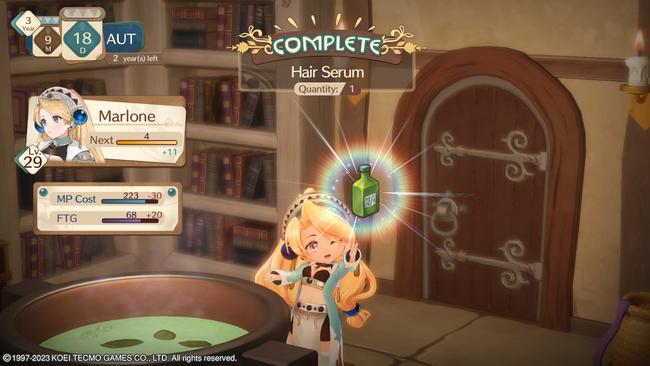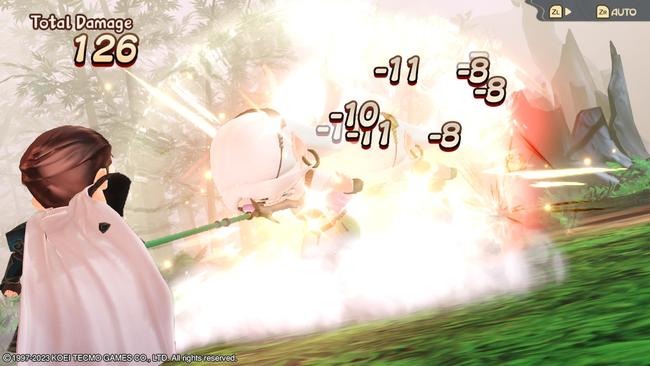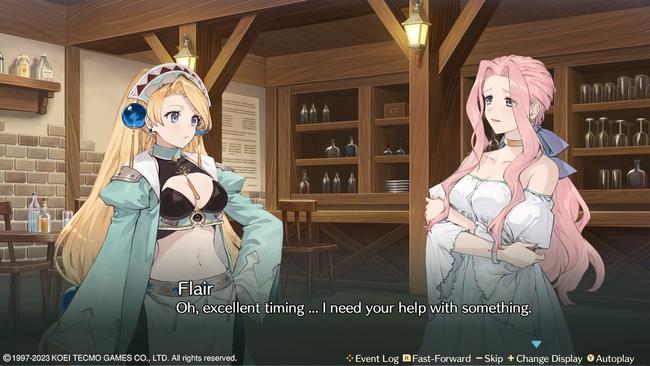Atelier Marie Remake: The Alchemist of Salburg Review
The long-running Atelier series has a history that hasn’t been (officially) accessible outside of the Japanese language for some time. This remake of the very first game, now titled Atelier Marie Remake: The Alchemist of Salburg, is both an opportunity for new fans and old to see where it all began. Having access to the full game now, I felt much more relaxed to enjoy this cozy rpg.
Since failing her studies at the academy, Marlone (nicknamed Marie) has been given a special five-year assignment: run an Atelier and create an amazing item to impress her professor. Overall the plot remains fairly minimal throughout Atelier Marie, mostly staying focused on personal accomplishments and developing friendships.

I haven’t played the original Atelier Marie, but as far as I can tell this is largely faithful, with some changes made due to now being able to move your character around. There are also a few new tutorials and some adjustments outside of the UI, such as the final exam now needing a rank six item, so you can't just beat the game in a minute or two anymore.
Like most Atelier games, you rely on your journeying to gather ingredients to synthesize into better items, which may be yet another step towards a better item. However, since this is the very first game, there are no traits or complicated procedures that fans may be used to. The larger focus is on management, that of your time and money. Simple tasks such as the most basic item creation, or gathering some grass will take an entire day, along with merely going back inside your atelier. Some items can take literal months to create when starting from scratch. Early on, you’ll encounter fairies you can hire to gather at certain spots or craft items for you at a slower rate, which is very useful for the more demanding items.
Money is earned by fulfilling time-sensitive quests posted at the tavern, and completing them will also build up your reputation which gives you further access to new quests, party members, and events. Checking out the local town is essential in order to learn of new locations and enemy encounters, and then in turn further develop your atelier. You can only sell certain items to the main shop, and what they will buy changes every few days so I rarely bothered (at least you can check from inside your atelier). I didn’t engage with the shops much once I’d bought all the time-saving alchemy equipment and recipe books, but I do wish I’d found the stall that sold decor sooner, since applying different ones will have minor effects, like reducing fairy wages. The story I kept developing in the weapon shop was funny, but it also led to long times when buying weapons was unavailable to me.

Most party members also require a wage, but some of your friends are free. The battle system is quite basic with a few status effects and a distinction between magic and physical damage (though there are no elements). There is also the ability to position between three rows to increase stats, replicating the grid layout of the original game. Thankfully all party members can use the items you create, but Marie eventually gains the special ability to buff the items she uses.
One of the things that had me worried in the preview was the mini-games. Thankfully, most of them are one-and-done, such as not being able to buy a mousetrap until you catch a mouse after synthesizing some cheese. The most egregious mini game was upon getting the item that drops from one of the few bosses in the game, I was forced to pacman my way around some bears in order to keep it.
There’s a little bit of a learning curve at the start of the game. I felt a little lost or like I was missing things, but within a couple of years I found where most items are and how to make them. The mid-year exams are good for some sense of direction, such as asking you to have reached a certain reputation or crafted a certain number of items within six months. Thankfully those check off instantly if you've already met the requirements.
I didn't get close to too many party members, but like in every other Atelier game, your friendships will unlock new scenes with them and everyone had a good amount of depth to them early on. Of course, you do have the option in this remake to turn off the five-year time limit, but I don’t think it’s really needed. I had a year left (and before that had already maxed my reputation and knowledge) and ended up at a little bit of a loss as to what to do. Some things are still a mystery to me, such as one item I didn’t know the ingredient for or what the castle does, but likely were connected to a party member's story.

Atelier Marie reminds me a bit of some of my favourite games, such as the fairies functioning like harvest sprites in the Story of Seasons series, or the calendar system including special annual events that following through with will unlock other parts of the story like in the Princess Maker series.
One of the highlights of this game is the redone graphics, with an adorable 3D chibi style to match the original’s look. The environments can still be somewhat simple, but the lighting makes them really pop. As the seasons come and go areas will change to match which is nice to see. Playing on the Switch version after the PC I can see the blurriness around the edges is a bit thicker, but eventually not very noticeable. Cutscenes mostly play out visual novel style with beautiful sprites moving while they talk, and this illustrated style can occasionally be enjoyed with a few events giving larger stunning illustrations.
I really liked Marie’s style, her top looks a little weird but the accessories and such make her stand out quite well from the more recent Atelier protagonists. One fun little feature is the photo mode accessible in any location, and not just the dedicated photo hall. I didn't experience any performance issues and mostly stuck with the mid-battle speed. Somewhat surprisingly, loading times are extremely minimal. The soundtrack is pretty small, though like usual I love the battle track, and I do wish I had access to the other games tracks (most of which will be a digital deluxe-only bonus). The voice acting is only in Japanese and there’s not too much of it.
The simplicity of the Atelier series in its base form requires you to manage your time and discover things for yourself. Like the original, Atelier Marie Remake has a pretty small scope, with a playthrough easily taking less than ten hours and most players aren’t likely to do more than two playthroughs. The changes to this game make it a joy to look at and smooth to play with very few issues. Some people might enjoy the shorter run time, but pairing it with the price, I don’t think it should be a nearly full-priced game. However, it is a mostly relaxing experience that still keeps the essence of why people enjoy Atelier games.